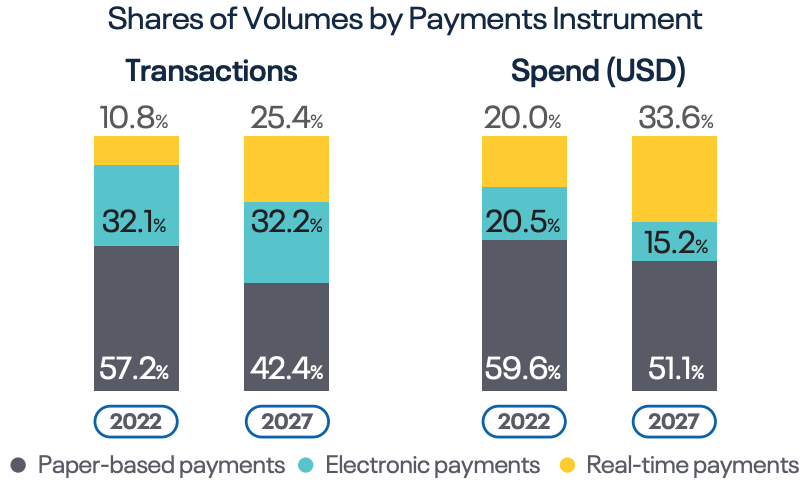Advancements in technology, changing demographics and supportive regulations are driving the rise of digital banking in Asia, with Singapore and Hong Kong emerging as key players.
While both locations have witnessed significant growth in their respective digital banking landscape, adoption of digital banking has been faster and stronger in Singapore as local consumers are showing a greater level of usage of and eagerness to utilize these new innovative solutions, new data released by RFI Global show.
In a report released on September 27, the Australian financial insights provider shares findings of an analysis of Singapore and Hong Kong’s digital banking industry, highlighting the state of adoption in these two locations.
Findings of the analysis reveal that Singapore overtakes Hong Kong in adoption and boasts the largest proportion of customers identified as “heavy digital users”. In H2 2022, 35% of Singapore’s retail banking population used online Internet or mobile banking frequently, a rate at stands at a lower 25% for Hong Kong customers.
The research also shows that youth, especially in Singapore, are leading the nation’s digital banking revolution. In the city-state, almost 50% of Generation Z members, or those born between 1996 and 2010, prefer online banking, compared to 30% in Hong Kong.
According to the report, several reasons are behind Hong Kong’s slower adoption of digital banking. For one, the city’s regulatory environment has traditionally favored traditional banking. Second, consumers have historically shown an inclination toward traditional banking, a trend that could have created some inertia when these new banking methods were introduced.
High levels of real-time payment adoption
Usage of digital banking is lower Hong Kong than in Singapore despite the city’s higher adoption of real-time payments. In September 2022, FPS reached 10.9 million registered users and an average daily turnover of 928,000, representing a 17-time surge since its launch in October 2018, data from the Hong Kong Monetary Authority show.
In comparison, Singapore had 5.5 million bank accounts registered with its PayNow service in October 2022, an official representing the Monetary Authority of Singapore said at the time. Of these, 3 million were linked to mobile phone numbers, 2 million linked to Singaporean National Registration Identity Card (NRIC) numbers, and half a million linked to Foreign Identification Numbers (FINs). Usage of PayNow, including payments to merchants and businesses, reached S$46 billion in 2021.
Hong Kong launched its instant payment system in 2018. Unlike many other systems, FPS connects both banks and payment service providers, allowing interoperable transfers between bank accounts and mobile wallets. In 2022, almost 11% of transactions in Hong Kong were conducted through FPS, and city recorded one of the highest mobile wallet penetration rates of Asia-Pacific, which stood at more than 89%, data from ACI Worldwide show.

Shares of volumes by payments instrument in Hong Kong, Source: Prime Time for Real-Time Global Payments Report, ACI Worldwide, March 2023
Singapore, meanwhile, introduced in 2017 PayNow, an overlay service built on its interbank fund transfer infrastructure, called FAST. In 2022, real-time payment systems volume of transactions represented an 8.6% share of total payments volume, the data show, while mobile wallet penetration stood at nearly 78%.
Between 2022 and 2027, real-time payments in Hong Kong and Singapore are projected to grow at compound annual growth rates of 24.2% and 18.3%, respectively, reaching a 25.4% share of total payments volume for Hong Kong, and a 15.2% share for Singapore.

Shares of volumes by payments instrument in Singapore, Source: Prime Time for Real-Time Global Payments Report, ACI Worldwide, March 2023
Digital banking on the rise in Asia
Asia has emerged as one of the world’s leading regions in digital banking adoption, a growth that’s been driven by favorable demographics, a booming technology sector, and a large population of unbanked.
Recognizing the potential of digital banking to improve financial access, boost economic growth, and foster both innovation and competition in the banking sector, governments across the region have introduced digital banking regulations and licensing frameworks.
In Singapore, the central bank launched its digital banking licensing framework back in 2019 and has so far granted licenses to four entities, bringing the total number of digital banks operating in the city-state to five.
These digital banks have witnessed some traction. GXS Bank, a joint venture between Singapore Telecommunications (Singtel) and ride-hailing company Grab, reported in April 2023 that it had almost reach SGD 50 million (US$37 million) in retail deposits.
Trust Bank, which launched in September 2022 through a partnership with Standard Chartered and FairPrice Group, claims that more than 600,000 customers have already signed up for its digital bank.
And Anext Bank, which is owned by China’s fintech powerhouse the Ant Group, says that cross-border transactions are growing 20% month-on-month. The bank, which targets small and medium-sized enterprises (SMEs) in Singapore, says that 65% of its clients are considered micro-businesses and that a third of them have been incorporated within the last two years.
In Hong Kong, the central bank launched its virtual banking framework in 2018 and has so far granted eight licenses. Data from KPMG show that the total combined gross loans offered by these companies has increased significantly since they began operating, rising from HKD 6 billion (US$767 million) in December 2021 to HKD 16 billion (US$2 billion) in December 2022. These digital banks, which started operations in 2020, cumulated a total of 1.7 million virtual banking accounts in October 2022.
Featured image credit: edited from freepik
- SEO Powered Content & PR Distribution. Get Amplified Today.
- PlatoData.Network Vertical Generative Ai. Empower Yourself. Access Here.
- PlatoAiStream. Web3 Intelligence. Knowledge Amplified. Access Here.
- PlatoESG. Carbon, CleanTech, Energy, Environment, Solar, Waste Management. Access Here.
- PlatoHealth. Biotech and Clinical Trials Intelligence. Access Here.
- Source: https://fintechnews.sg/78574/virtual-banking/singapore-overtakes-hong-kong-in-digital-banking-adoption/





